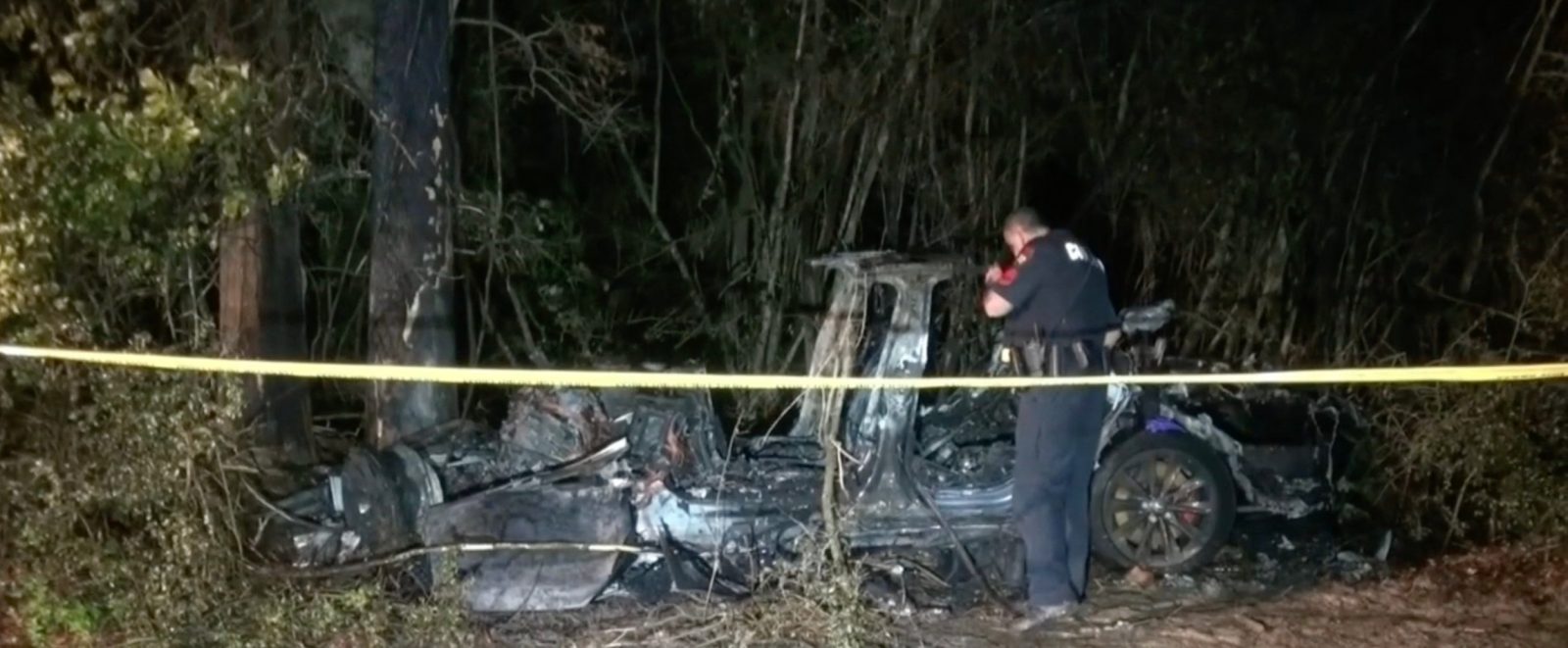
Tesla has released more details about the fatal crash in Texas that has captivated the media over the last week.
While Tesla released more information following an investigation with local authorities, ther are still a lot of questions unanswered.
On April 17, a strange and tragic accident in a Tesla that happened in Spring, Texas near Houston.
A Tesla Model S missed a turn, hit a tree and caught on fire – leaving the two people inside dead. The owner of the Model S, a local doctor, and his friend.
The accident made national news and it was reported that as a “driverless Tesla crash” because the police said that they believe no one was driving the vehicle.
That statement was reportedly based on the bodies being found in the front passenger seat and the backseat as well as a comment from a family member about the driver possibly jumping into the backseat.
Tesla doesn’t have autonomous vehicles on the road where drivers can jump in the backseat, but many speculated that Tesla’s Autopilot driver-assist features might have been involved.
CEO Elon Musk quickly commented that data showed Autopilot wasn’t engaged and couldn’t have been engaged on the road where the accident happened and criticized the media for suggesting that it might have been the case.
The NTSB and NHTSA both launched investigations into the accident.
Now Tesla has commented in more detail than Musk’s short tweet from last week.
During a conference call for Tesla’s Q1 2021 results, Lars Moravy, Tesla’s Vice President of Vehicle Engineering, commented:
“We did a study with the authorities within the past week to understand what happened in that particular crash and what we have learned from that is Autosteer did not and could not engage on the road conditions as it was designed and adaptive cruise control only engaged when the driver was buckled and driving above 5 mph, and it only accelerated to 30 mph within the distance before the car crash.”
As well, the car’s adaptive cruise control decelerated and came to a stop after the driver’s seatbelt was unbuckled.Through further investigation of the vehicle accident remains with NTSB and local police and we were able to find that the steering wheel was indeed deformed leading to the likelihood that someone was indeed in the driver’s seat and all seatbelts post-crash were unbuckled.
The Tesla executive also confirmed that Tesla couldn’t retrieve the SD card with more data or video of the crash.
The authorities are still working on that and the investigations are ongoing.
Electrek’s Take
Alright, this is a much better response from Tesla than what Elon said, but it is still confusing.
First of all, Autopilot was involved in that drive (not the crash apparently). Maybe not Autosteer, but Tesla has advertised TACC, its traffic-aware cruise control, as an Autopilot feature.
Now it doesn’t mean it was involved in the crash, but it does explain a few things.
It looks like the driver did try to engage Autopilot with adaptive cruise control, but only cruise control could come up and then he unbuckled his seatbelt – presumably to jump on the backseat as stated by a family member.
Therefore, it looks like the theory that they went on a drive to “test out autonomous features” is a real possibility even though Tesla’s Autopilot features shouldn’t be described as “autonomous driving” and it looks like the Autopilot driver-assist features were misused.
Now it looks like the driver might have misunderstood the capability of Tesla’s Autopilot features since it looks like they worked as intended but were misused if he tried to jump in the backseat.
If TACC indeed came to a stop as described by Moravy, then we still don’t know what happened after and leading to the actual crash.
We are still far from a clear picture of what happened that night despite the whole event apparently being only a very short drive and hope the NTSB and NHTSA investigation shed more light on this tragic and strange accident.
As for Elon’s comment about the media, there sure was some misreporting regarding this event, but a lot of that came from the police stating that they believed no one was in the driver’s seat.
There were some speculations in the media that wasn’t smart, but it’s not wrong for the media to report what the police were saying about the crash. As long as they share the new information as it comes in, I don’t think we can blame them much on that front.
Now I’m not talking about the few media, like Automotive News for example, who straight put the blame of Autopilot. That’s obviously bad reporting.
It felt to me that a lot of the misreporting came from misunderstanding Autopilot in the media. A PR department would certainly help on that front.
FTC: We use income earning auto affiliate links. More.

Comments